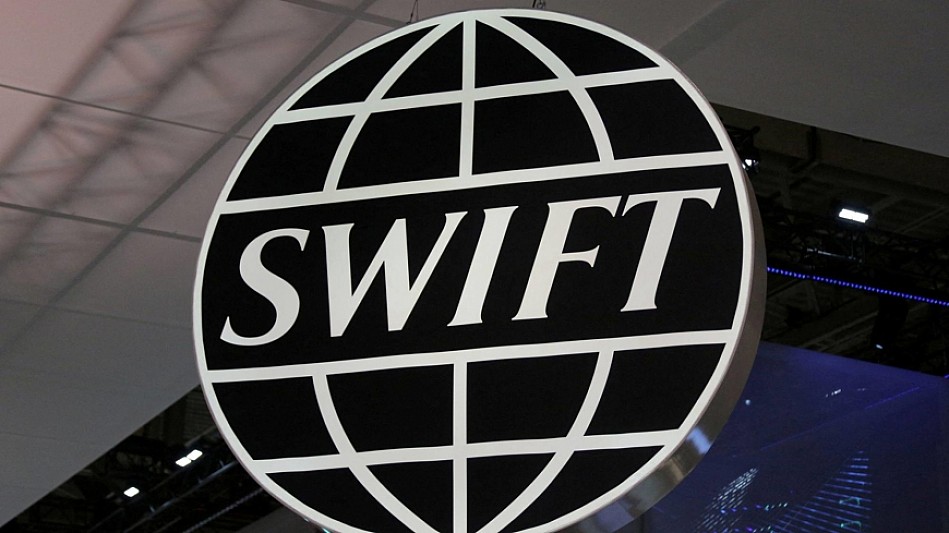SWIFT's Strategic Blockchain Initiative: A Response to the Rise of Stablecoins
SWIFT's Strategic Blockchain Initiative: A Response to the Rise of Stablecoins
By
Calder Monroe
Last updated:
September 30, 2025
First Published:
September 30, 2025

Photo: cryptodnes.bg
SWIFT's Response to the Digital Finance Landscape
In a significant move to modernize global financial infrastructure, SWIFT, the Belgium-based cooperative serving over 11,500 financial institutions worldwide, has announced plans to integrate a blockchain-based shared ledger into its existing network. This initiative aims to address the growing demand for real-time, secure, and cost-effective cross-border payments, positioning SWIFT to better compete with the rapidly expanding stablecoin market.
The Rise of Stablecoins and the Need for Innovation
The stablecoin market has seen exponential growth, with the sector now valued at approximately $300 billion. These digital assets, pegged to traditional currencies like the US dollar, offer faster and more affordable alternatives to conventional banking systems. In response, SWIFT is collaborating with over 30 global financial institutions, including Bank of America, Citigroup, and NatWest, to develop a blockchain solution that can facilitate tokenized product payments and enhance the efficiency of cross-border transactions.
Leveraging Blockchain for Real-Time Payments
The proposed blockchain-based ledger will utilize smart contracts and transaction sequencing to enable instantaneous, 24/7 cross-border payments. By adopting blockchain technology, SWIFT aims to reduce reliance on intermediaries, lower transaction costs, and improve transparency in international financial transactions.
Strategic Partnerships with Blockchain Innovators
To bring this vision to fruition, SWIFT has partnered with ConsenSys, a leading blockchain technology company known for its expertise in Ethereum-based solutions. The collaboration focuses on developing a prototype using Linea, an Ethereum Layer-2 network that employs zero-knowledge cryptography to batch transactions, enhancing speed and privacy. This partnership underscores SWIFT's commitment to integrating cutting-edge blockchain technology into its infrastructure.
Implications for Traditional Banking Systems
SWIFT's foray into blockchain technology signifies a paradigm shift in the traditional banking sector. By embracing decentralized ledger systems, SWIFT aims to streamline operations, reduce settlement times, and offer more competitive services to its member institutions. This move could potentially redefine the role of traditional financial intermediaries in the global payments ecosystem.
Enhancing Interoperability with Existing Systems
A key feature of the new blockchain infrastructure is its focus on interoperability. The shared ledger is being designed to seamlessly integrate with existing financial systems, ensuring that banks can transition smoothly without disrupting their current operations. This approach aims to facilitate the adoption of blockchain technology across the global financial network.
Addressing Regulatory Challenges
As SWIFT ventures into the realm of blockchain, it must navigate the complex regulatory landscape governing digital assets. The organization is working closely with regulators to ensure that the new system complies with existing financial regulations and standards. This proactive approach aims to mitigate potential legal and compliance risks associated with the adoption of blockchain technology.
Potential Impact on Global Trade and Finance
The implementation of a blockchain-based ledger could have far-reaching implications for global trade and finance. By enabling faster and more secure cross-border payments, SWIFT's new system could facilitate smoother international transactions, reduce barriers to trade, and promote financial inclusion in underserved regions.
Competitive Landscape and Future Outlook
SWIFT's blockchain initiative positions it to better compete with emerging digital payment platforms and stablecoin issuers. By leveraging its extensive network and established reputation, SWIFT aims to offer a trusted and scalable solution for international payments. The success of this initiative will depend on its ability to deliver on its promises of efficiency, security, and compliance.
A New Era for Cross-Border Payments
SWIFT's decision to integrate blockchain technology into its infrastructure marks a significant milestone in the evolution of global financial systems. By embracing innovation and collaborating with key industry players, SWIFT is positioning itself at the forefront of the digital finance revolution. As the project progresses, it will be crucial to monitor its development and assess its impact on the broader financial landscape.
Popular articles
Subscribe to unlock premium content
Disney’s Timeless Magic and How the Entertainment Giant Continues to Shape Culture and Innovation

Imran Khan’s Economic Missteps Amid Political Chaos in Pakistan

The Philippines’ Digital Shift How Remittances and BPO Are Fueling Growth

Disney’s Timeless Magic and How the Entertainment Giant Continues to Shape Culture and Innovation

Imran Khan’s Economic Missteps Amid Political Chaos in Pakistan

Disney’s Timeless Magic and How the Entertainment Giant Continues to Shape Culture and Innovation









